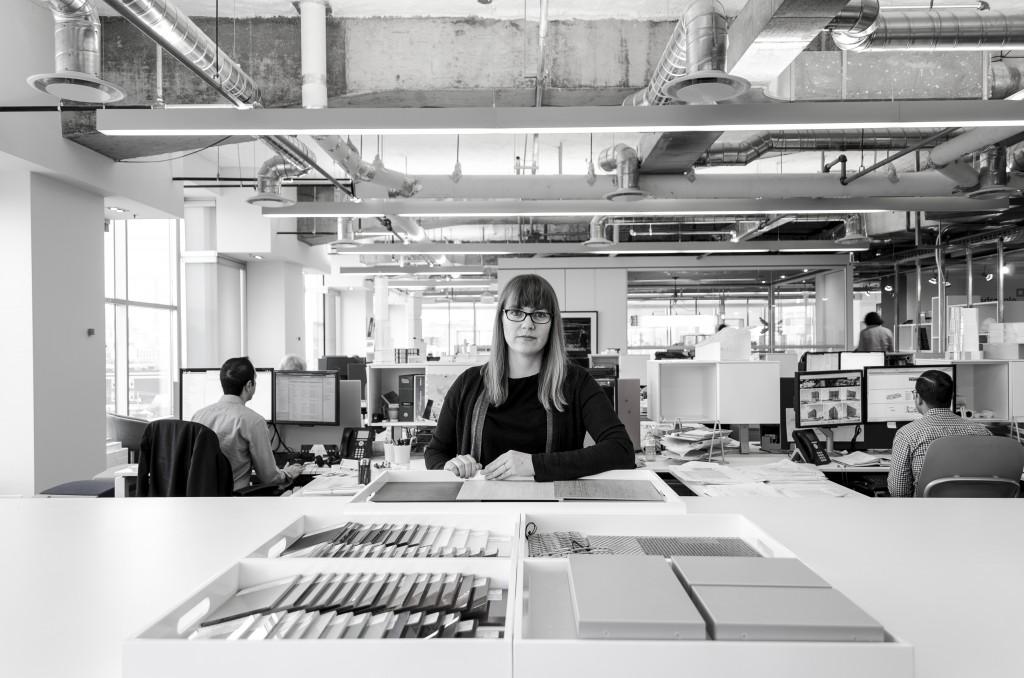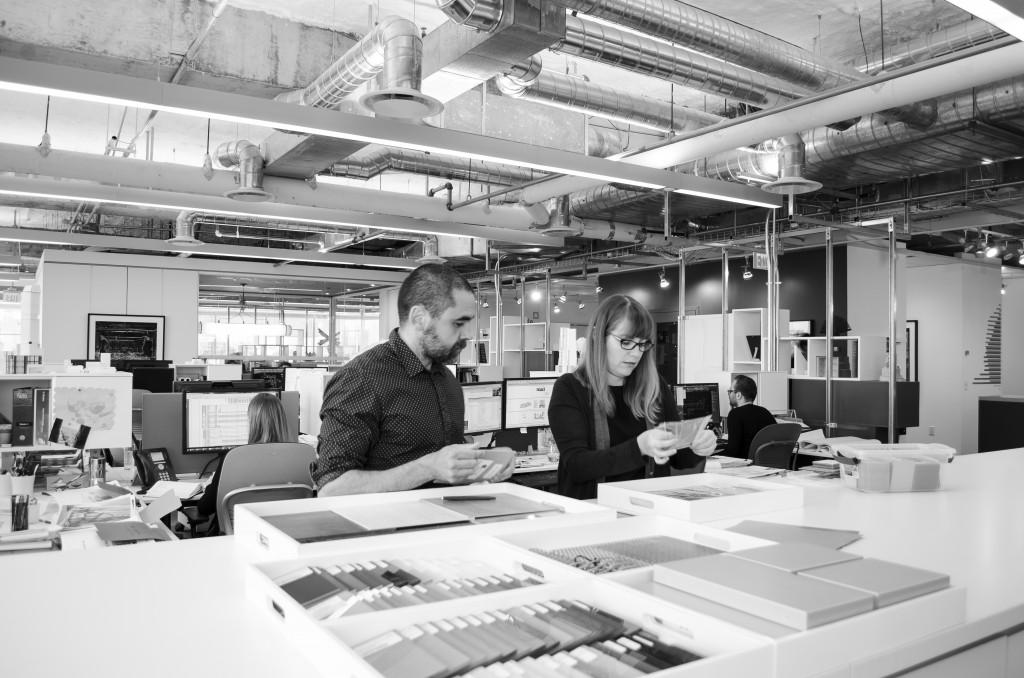“Nothing can replace the physical sample. The value of seeing – and feeling – the real material cannot be overstated. The nuances, the variations, and the reality of the material are only really apparent when viewing the physical object.”

Kenzie Thompson is an Intern Architect and curates and leads the development of our in-house Architectural Materials Research Centre. We sat down with her to discuss the importance of a physical library in a digital age.
What is the purpose of a materials and reference collection? How does it support an architectural design team?
Considering material choices is a fundamentally important part of the design process. The aim of the collection is twofold: to facilitate the efficient selection of materials, and to inspire great design.
The first part of this mandate is quite practical; having samples and information on-hand streamlines the material selection process. This can allow the process of material selection to begin early on in the development of a project, and to be an integrated part of the design process, without exhausting an unreasonable amount of time and energy. It allows the materials to be integrated into the process in an organic manner.
The first part of the mandate feeds into the second part, because when material selection is an integrated part of the selection process, this can benefit the design, not just in terms of efficiency, but by facilitating consideration and discussion of material weights, thicknesses, and juxtapositions. A deeper understanding of the materials we are using is of benefit to the design. The research, foresight and curation involved in maintaining the collection also elevates the level of design, and the performance of any particular building, by increasing exposure to new and innovative materials throughout the studio.

With the rise of digital tools, software and archiving capabilities, you have worked hard to ensure a physical library remains, both in terms of space and the actual materials themselves. Can you speak to this importance?
Nothing can replace the physical sample. The value of seeing – and feeling – the real material cannot be overstated. The nuances, the variations, and the reality of the material are only really apparent when viewing the physical object. For example, one can quickly determine whether a material consists of a veneer or painted finish, or whether the colour and consistency are through-body, or whether a material may require more structural support than another, based on its solidity and weight. In these instances, the inherent qualities of the material are intuitively understood; that cannot be replaced.

We have seen great success with 3D printed models and stakeholder engagement. What role do you feel this library plays in supporting clients and their ability to make decisions?
Material sample boards, and sometimes loose collections in our display trays, are a significant part of client presentations. They bring a tactile reality to the drawings, renderings and sketches, and serve as a sort of ‘bridge’ between the two-dimensional and the three-dimensional. Drawings, renderings and sketches, as well as 3D models, are highly valuable in conveying the design intent, and having a material palette on-hand can help to ground the design, in a very immediate sense.
How would you like to see the library grow?
The physical library has recently been expanded by the installation of additional purpose-built millwork; the studio as a whole is growing, and it’s great that there’s this commitment, this investment in our internal design growth, and in raising the profile of materials within the studio.
We are in the process of developing multiple facets of the materials-related digital resources. One component will allow easy access to information such as cost, lead times, and product dimensions, which may influence material selection on a specific project. Along with this information, standard details will be provided, which can be incorporated into the design as it progresses. We are also hoping to develop some additional facets, which should facilitate knowledge sharing among studio members.
What we are cultivating is not just a digital or physical library storage area, but a “hub” for discussion and knowledge sharing that brings together both architecture and interior design.
We want to ensure that the collection continues to broaden and deepen our understanding of materials, and that this understanding maintains and enriches the level of design across the studio.